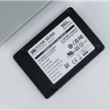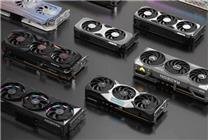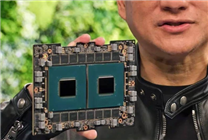AMD RX 9000 Series Gains Ground in Australian Market
Key Takeaways
- Market Share Insights: The NVIDIA RTX 50 series leads at 56%, while the AMD RX 9000 series holds 44% of the graphics card market in Australia.
- Performance Competition: The RX 9070 XT and RX 9060 XT significantly outperform their NVIDIA counterparts in sales, demonstrating AMD’s robust positioning.
- Product Variety: NVIDIA offers a broader range of graphics card models, complicating competition for AMD.
Recent reports from a prominent Australian technology channel indicate a significant shift in the graphics card landscape within the local market. The NVIDIA RTX 50 series commands a leading share of 56%, while its closest competitor, the AMD RX 9000 series, accounts for 44%. This division suggests an intense rivalry, with AMD making notable strides despite facing fierce competition from NVIDIA.
AMD’s Ascendancy in Australia
The RX 9000 series has emerged as an appealing choice for consumers, largely due to its cost-effectiveness. However, on a global scale, it remains challenging for AMD to compete with NVIDIA, particularly in capturing significant market share in a region such as Australia. While it’s impressive for AMD to secure nearly half of the local share, the overall landscape reveals NVIDIA’s continuing dominance. The previous generation of NVIDIA’s graphics cards, the RTX 40 series, outsells AMD’s RX 7000 series considerably, demonstrating the uphill battle AMD faces.
Sales Figures Showcase Strong Performance
Delving into specific models, the RX 9070 XT has triumphed over the RTX 5070 Ti, boasting sales figures that are more than double those of its NVIDIA competitor over the past six months. Similarly, the RX 9060 XT has shown remarkable performance, achieving sales figures approximately twice that of the RTX 5060 Ti. Moreover, the RX 9070 has experienced a surge, selling over 70% more than the RTX 5070 in the last three months. However, NVIDIA’s RTX 5070 has started to reclaim some ground, with the RX 9070 leading sales in the most recent month by just 20%.
Evaluating Performance Across Models
Consumers often wonder why these AMD models perform notably better. Several factors contribute to this trend. Among them, the RX 9000 series benefits from competitive pricing and availability, which has resonated well with Australian consumers. However, when contrasting the entire RX 9000 series with NVIDIA’s RTX 50 series, it’s evident that the latter offers a richer variety of models. NVIDIA’s offerings include the RTX 5090 and RTX 5080, which currently lack any competition from AMD.
NVIDIA’s Robust Market Presence
NVIDIA’s overwhelming advantage is underscored by the variety of available models. The company boasts an impressive portfolio, with over 870 non-public versions of the RTX 50 series, including 127 variations of the RTX 5090 and 138 versions of the RTX 5080. In stark contrast, the AMD RX 9000 series lacks this breadth, with only around 150 non-public versions—many of which are restricted to the Chinese market. This disparity underscores NVIDIA’s robust partnerships and extensive reach in the industry, giving it a substantial leg up in terms of product offerings.
Concluding Thoughts
While AMD’s RX 9000 series is making notable gains in Australia, particularly with standout models like the RX 9070 XT and RX 9060 XT, the overall landscape still shows NVIDIA as a dominant force. The differences in model variety and market strategies reveal the complexities of competition within this industry. As AMD seeks to narrow the gap, fans and consumers alike will be keenly observing future developments in product launches, pricing, and availability.
In summary, the ongoing battle between AMD and NVIDIA in the graphics card sector remains dynamic, with consumer preferences continually evolving based on value, performance, and availability.







